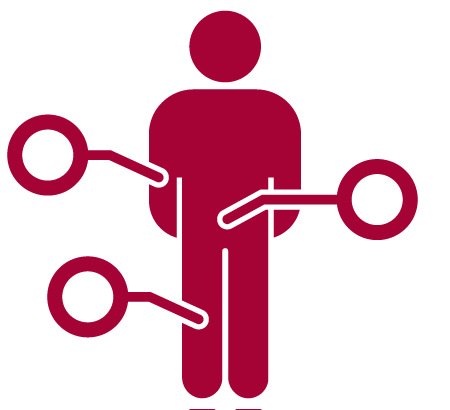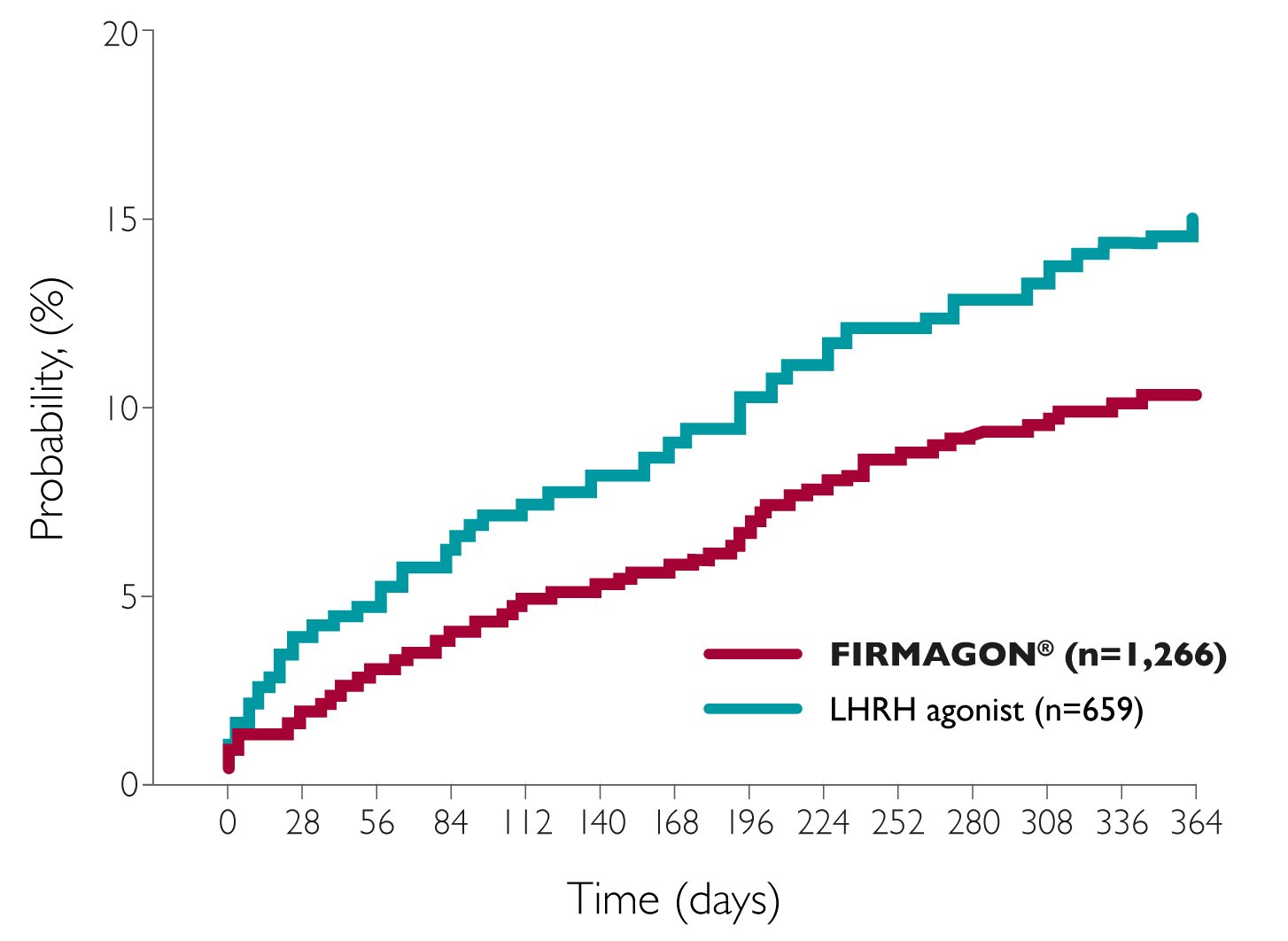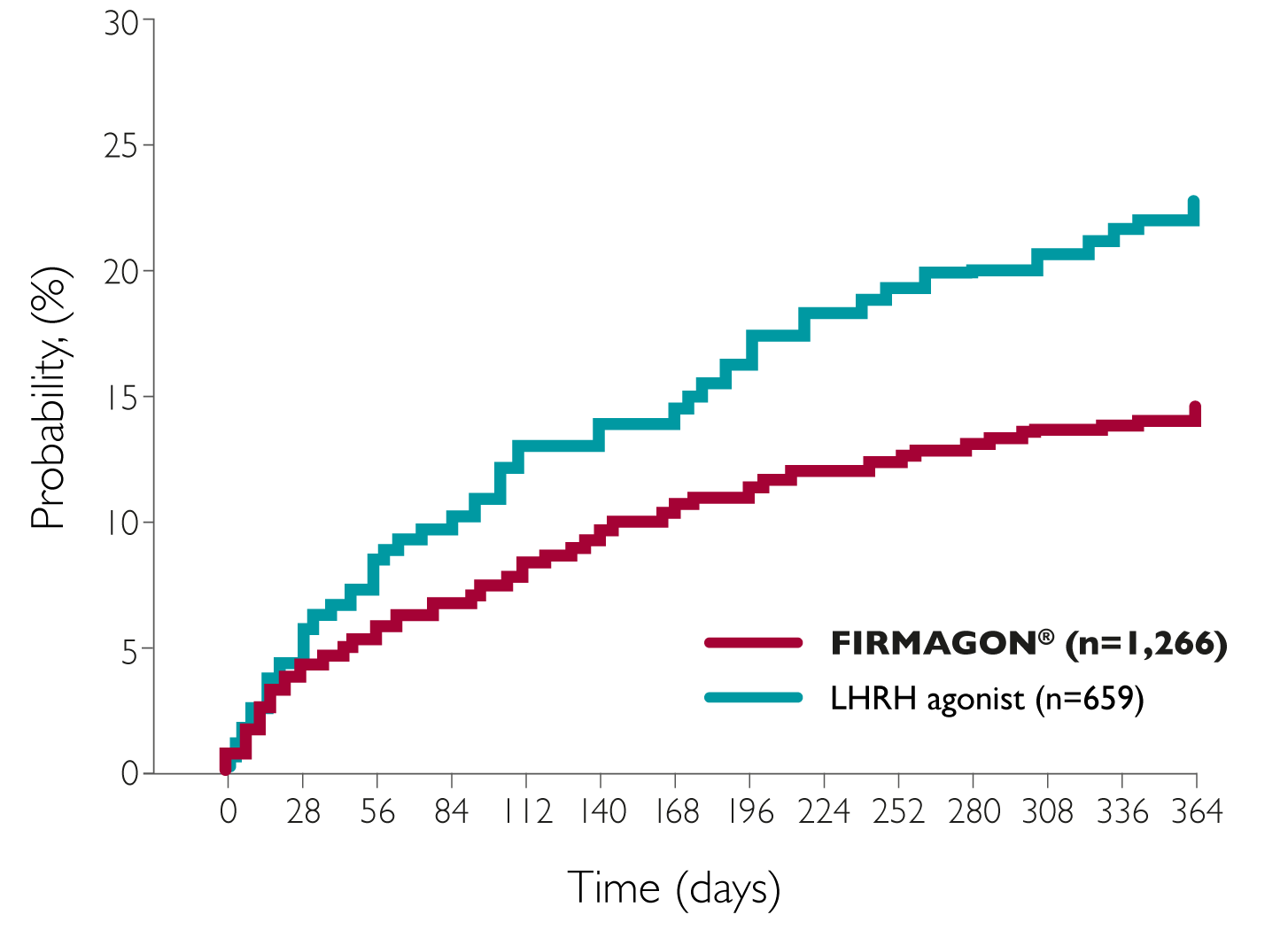

How can FIRMAGON® help with disease-related symptoms?
What are the relative risk reductions of these symptoms when treating with FIRMAGON® vs LHRH agonists?
These common symptoms can have a negative effect on patients’ quality of life,2,3 potentially impacting the NHS burden:
Urinary-tract problems
Urinary-associated problems, e.g. obstructive uropathy leading to persistent infections and LUTS

Bone and back pain
As a result of arthralgia, or eventually bone metastases which can lead to fractures and spinal cord compression

FIRMAGON® is significantly more effective in controlling disease-related symptoms vs. LHRH agonists1
† Absolute values for joint-related signs and symptoms are not reported in the paper.
‡ Crude incidence of a urinary tract event was 12% vs. 18% for FIRMAGON® and LHRH agonist respectively.
§ Crude incidence of a musculoskeletal event was 8% vs. 12% for FIRMAGON® and LHRH agonist respectively
How can FIRMAGON®’s MOA help improve control of disease-related symptoms?
Compared with LHRH agonists, FIRMAGON® blocks GnRH receptors leading to a rapid, profound and sustained suppression of testosterone, FSH, LH and PSA5

Use the buttons below to choose
A pooled analysis of 5 randomised controlled trials by Klotz et al. 2014 revealed the probability of experiencing a musculoskeletal event1

A pooled analysis of 5 randomised controlled trials by Klotz et al. 2014 revealed the probability of experiencing renal or LUTS adverse event1

References
1. Klotz L, et al. Eur Urol 2014;66:1101–1108.
2. NHS. Prostate cancer. Symptoms. Available at: https://www.nhs.uk/conditions/prostate-cancer/symptoms/. Last accessed: February 2024.
3. Prostate Cancer UK. Living with prostate cancer. Available at: https://prostatecanceruk.org/prostate-information/living-with-prostate-cancer. Last accessed: February 2024.
4. Drudge-Coates L. Int J Urol Nurs 2009;3(3):85–92.
5. Klotz L, et al. BJU Int 2008;102:1531-1538.





